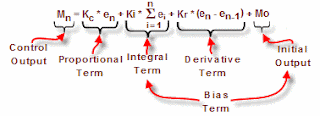I removed the T-type thermocouple and installed a K-type thermocouple by drilling a hole and bolting the probe so it sticks into the oven area just above the mid rack and towards the back. I also installed the ITC-106VH which I finally received after returning the counter Amazon sent me by accident. I then went through the settings making sure they were right for my application including setting the display to Fahrenheit.
I tried to heat the oven up to 100F but the detected temperature starting going down instead of up. This meant that I had the thermocouple wired backwards so i switched the terminal connections and waited for the unit to return to room temperature.
When I returned to the project the temperature readout looked like it was low for room temperature so i used my IR-40 Infrared Thermometer to read the temperature inside the oven near the thermocouple and the controller was 6.8 degrees low. I adjusted this in the controller's calibration settings so it now reads accurately at room temperature.
I then set it again to 100F and it had an initial over shoot of 10 deg and then under by 5 deg and tuned in from there. For reference the PID control formula is:
After it sat at 100F (which I did not cross verify with the IR thermometer so it may not have been 100F inside the oven) I set the new target temperature to 350F which it never reached. The controller said it was around 170F but I measured 250F in the oven. Interestingly, I had the same temperature issue with the T thermocouple on the other InkBird controller.
I think what is happening is that these cheap controllers do not have cold junction compensation build into them. To properly use a thermocouple you need to know the temperature of the wires at the point they connect to the controller. This is known as the cold junction. If the controller is just assuming the this connection is always at room temperature when it is not then the readings are going to be incorrect.
A new Omega PID controller is 100 dollars more then the inkbird but I guess you get what you pay for. So my options now are to try and insulate the controller from the heat of the oven which I dont think will work very well, Try and open and fix the Omega controller I already have, or bite the bullet and spend the money for a new proper industrial controller.
This would explain the differential in temperature but not why the oven was not able to heat up beyond 250F. Part of that may have been the cover was not installed increasing the heat loss as it was able to reach 350F when it was on before but according to the original knob on the front it should be able to reach 450F. I may try appling AC directly to the heating elements to see if they get hotter without going through the SSR.
The other issue is the circulation fan is still not running. Is it broken? This was a relatively new toaster oven when I started the project. The oven should work without it though.






